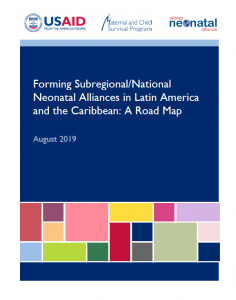
The Sustainable Development Goal (SDG) 3—“Ensure healthy lives and promote well-being for all at all ages”—states the need for countries to reduce the neonatal mortality rate to at least as low as 12 per 1,000 live births. Over the past two decades, neonatal mortality in LAC has shown important improvements. Neonatal mortality rates have decreased from 23 in 1990 to 10 per 1,000 live births in 2017 in the LAC region (UNICEF, 2018). However, there are considerable differences in the neonatal mortality among countries in the region (see Figure 1).
Even for countries that have made great strides in reducing mortality and morbidity, national rates often conceal significant inequities among vulnerable populations within countries. For instance, in the Dominican Republic, El Salvador, and Guatemala, neonatal mortality is three times greater among the poorest newborns than the wealthiest (UNICEF 2016).
In LAC, rapidly diminishing funding from donor agencies makes it especially critical to mobilize the region’s own significant capacity and resources to address long-standing, major disparities in reproductive, maternal, neonatal, child, and adolescent health.
In response to this situation, a group of passionate newborn health advocates in 2005 created the LAC Neonatal Alliance as a collaborative group seeking to prioritize newborn health in the LAC region.
This document identifies major steps needed to create a subregional or national neonatal alliance. They are recommendations based on experiences of Latin American and Caribbean (LAC) Neonatal Alliance members at the regional and country level. It articulates a shared strategic approach and aims to serve as a resource for countries within the LAC region to create their own alliances considering their local context.